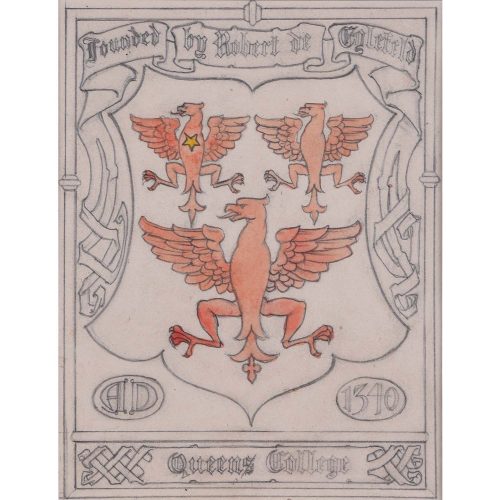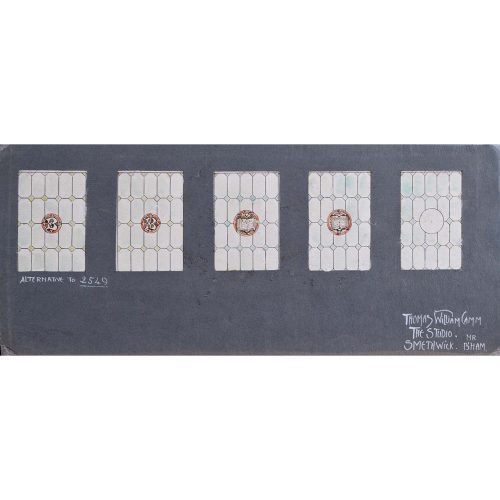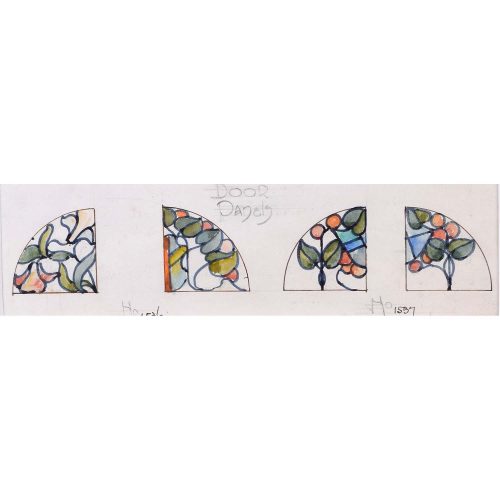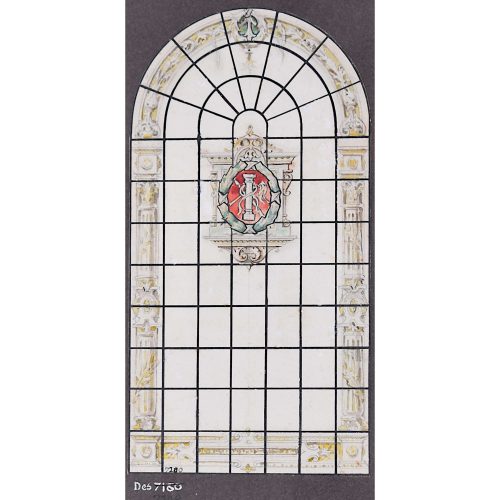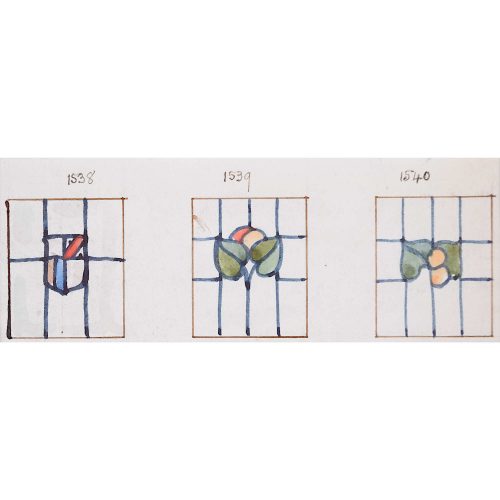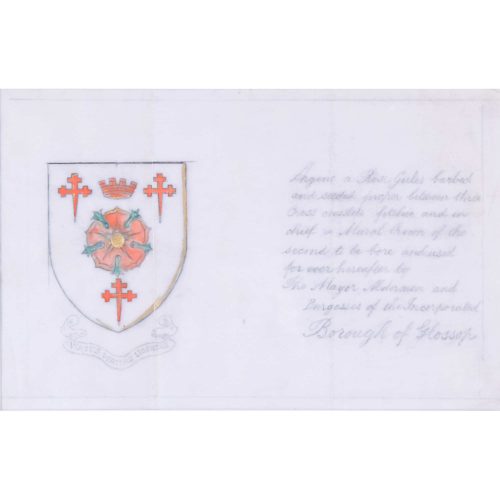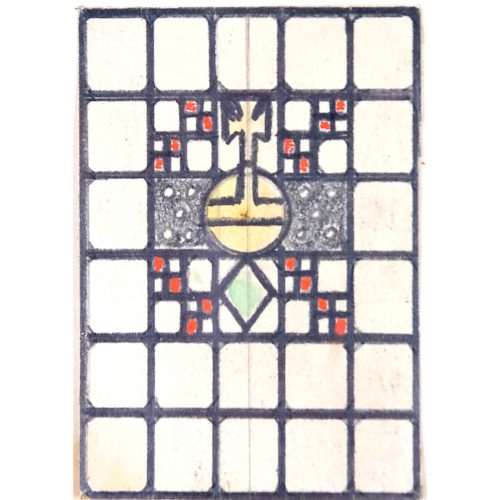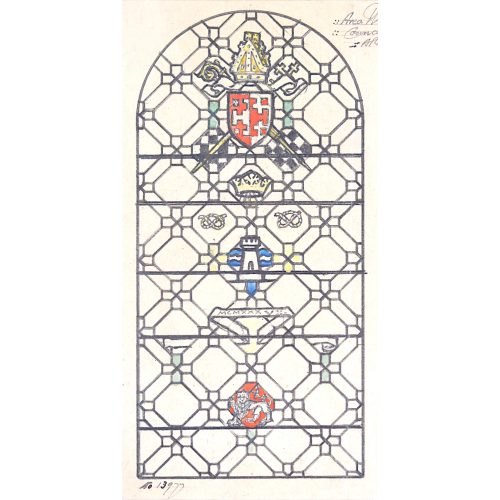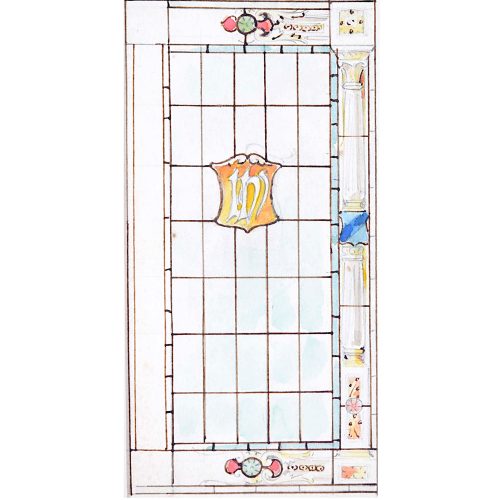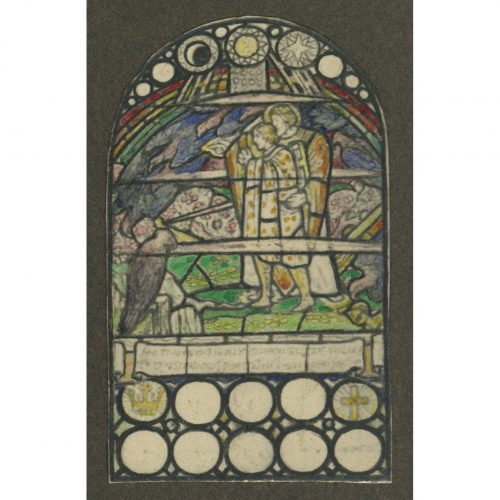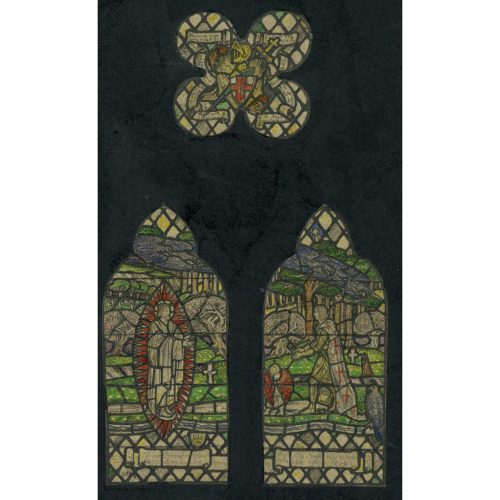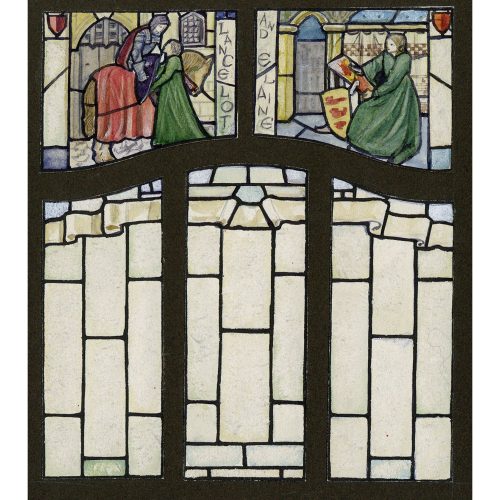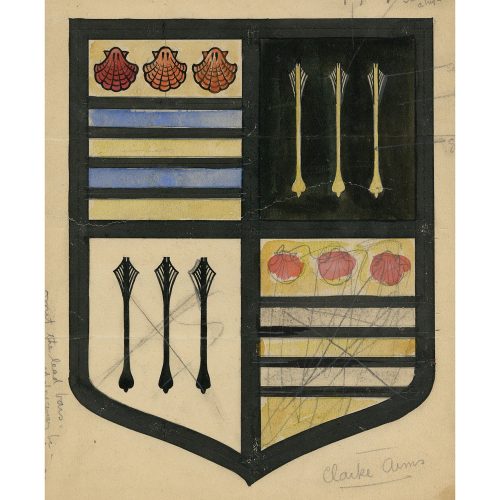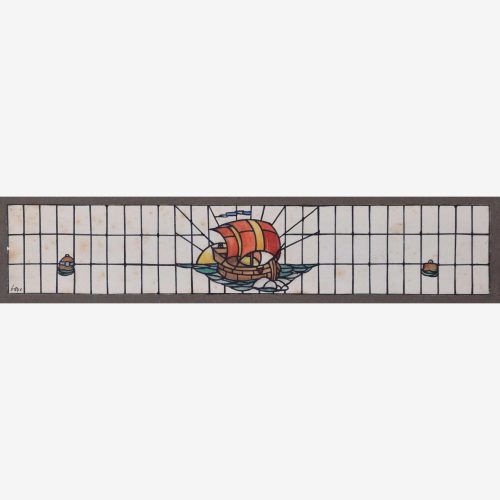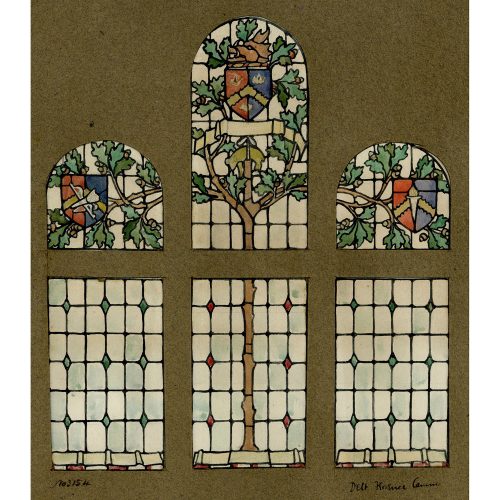Florence Camm (1874-1960)
Stained glass designer who exhibited 48 times at the Royal Academy and also exhibited at The Walker Art Gallery in Liverpool, The Royal Scottish Academy and Royal Birmingham Society of Artists. Following the death of her father, chief designer at TW Camm with many commissions both nationally and internationally.
Florence Camm was the daughter of Thomas William Camm (1839-1912) who founded the stained glass business T W Camm in High Street Smethwick. From 1892-1911 she studied at The Birmingham Municipal School of Art which, unusually for the time, encouraged girls to attend the life drawing classes – drawing fully nude female models and partially draped male models – thus explaining Camm’s skill with the human figure. Students were encouraged to execute their drawings for designs, thus giving them the skills to set up as manufacturers in Birmingham’s Jewellery Quarter. The arts and crafts designer Henry Payne was an influential tutor for Camm, being one of the most influential teachers at the BMSA who was working as a stained glass designer at the time; one of his most notable commissions was a painted mural illustrating Tudor History for the Houses of Parliament in 1908.
Following the death of TW Camm, Florence and her brothers – Walter and Robert – took over the business.
The Birmingham Museum and Art Gallery have a good collection of Camm’s works, in particular her windows depicting the story of Dante and Beatrice from Dante’s epic poem La Vita Nuova– designed for the English House at the Turin International Exhibition in 1911 where they were awarded the Grand Prix in three classes as well as the Diploma of Honour for the entire exhibition. These windows were not produced for commercial sale, but were invaluable for TW Camm’s advertising and were displayed in the customer space at Camm Studio.
A newspaper cutting from probably the 1950s states: “When she joined her father and brothers in the family business, she became what her brothers Robert and Walter describe as ‘the best man in the whole affair… the designs in delicate watercolours for the windows of the great churches are hers. The large-scale drawings or ‘cartoons’ are hers. And she also paints the glass … Mr Robert Camm, now aged 75, is responsible for the administration side of the business. His brother Walter, who is 72, attends to the cutting and firing.”
The realism of the figures in her windows was often praised, the Morning Post reporting (April 30 1910) that her cartoon of St Ethelreda had a naturalistic quality with none ‘of the mechanism unavoidable in drawings executed by firms; [instead having] an artist’s originality.’
Leading Arts & Crafts designer Mackay Hugh Baillie Scott chose Florence Camm for a domestic house for her combination of the bright colours from the Pre-Raphaelite tradition with a more modern Edwardian realism.
Arts and Craft style domestic windows were a well-established market by the time Camm joined the family business. Charging from half a guinea per foot for ornamental glass work – depending on the complexity of design – and between $15 and $25 for commissions for the American market, Camm’s windows were sold round the world.
TW Camm began his career as a stained-glass artist and manufacturer at Chance Brothers & Co. of Smethwick. In 1865 Chance shut their ornamental glass department so Camm and his two brothers set up Camm Bros. in Smethwick, selling the business in 1882 to R W Winfield & Co. By 1888 Camm had set up TW Camm on his own.
Further reading:
Dr. Sally Hoban’s PhD thesis The Birmingham Municipal School of Art and Opportunities for Women’s Paid Work in the Arts and Crafts Movement 1885-1914
West Midlands History video on Florence Camm featuring Dr Hoban.

